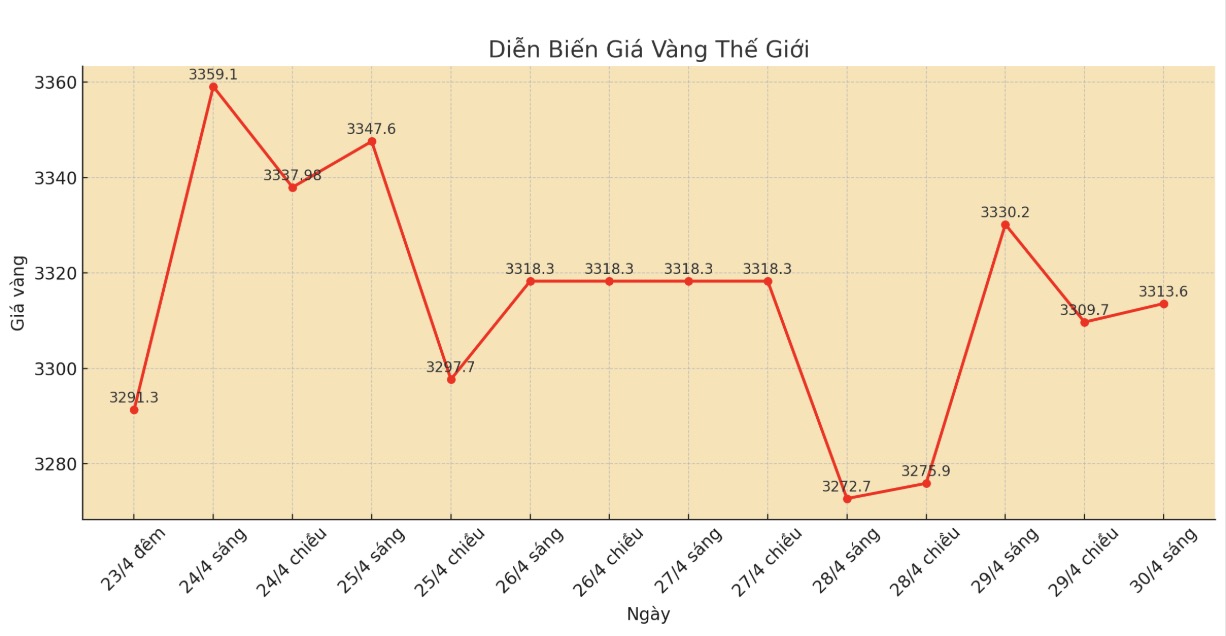In the latest commodity outlook report, World Bank experts predict that the average gold price this year will reach about 3,250 USD/ounce, up 36% compared to the average last year. This is a big change from the forecast in November, when they thought gold prices would move sideways.
It is expected that by 2026, the average gold price will decrease slightly to about 3,200 USD/ounce, down 1.5% compared to this year. However, in the broader context, gold is still predicted to be the most prominent asset in the commodity group in the next two years.
Thanks to the continued high demand for safe havens in the short term due to uncertainty, geopolitical tensions and concerns about fluctuations in major financial markets, gold prices are expected to remain high, around 155% compared to the average of 2015-2019. If geopolitical tensions and policy uncertainty continue to rise, gold prices could well exceed current forecasts, the report said.

In addition to positive reviews about gold, the World Bank also changed its forecast for silver. They had expected silver to outperform gold as industrial demand increased sharply.
Currently, the bank expects the average silver price in 2025 to be around $33/ounce, up 16.7% compared to last year. In 2026, silver prices could continue to increase to $34/ounce, up 3%.
Although weak global economic growth is expected to affect most commodities, the World Bank still expects industrial demand for silver to stabilize, helping to keep prices high.
Silver demand is expected to increase steadily thanks to its dual role as both an alternative shelter and an raw material in growing industries such as renewable energy and semiconductors.
Record industrial production and the installation of a global fiber optic system will support silver demand this year, despite the risks from the new tax policy. In addition, economic and geopolitical instability may also increase the safe-haven appeal of silver, experts say.
The World Bank predicts that both gold and silver will outperform the general commodity market. According to the forecast, global commodity prices will decrease by 12% this year due to weak demand, and continue to decrease by 5% in 2026.
Oil prices are expected to put a lot of pressure on the overall commodity index to decline in 2025, as global oil consumption slows down as supply expands. The trend of commodity price reduction is expected to take place widely, with more than half of commodities forecast to decrease, many items will decrease by more than 10%.
In general, the risk with the prospect of commodity prices leaning towards the negative side is due to global growth being under a lot of pressure from trade tensions, which reduces demand, the report said.
However, the World Bank also believes that if we want commodity prices to recover, the global economy needs to improve. If trade barriers are sustainable, the growth prospects could be better and support commodity prices to recover, the experts concluded.











